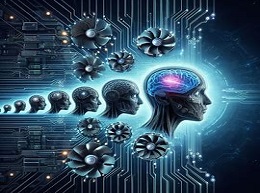The Evolution of AI Hardware: From GPUs to Neural Processing Units

1. The Role of Hardware in AI Advancements
Introduce the significance of hardware in driving the advancements and performance of artificial intelligence algorithms and applications.
2. Evolution of AI Hardware: From CPUs to GPUs
Trace the historical development of AI hardware, from early central processing units (CPUs) to the rise of graphics processing units (GPUs) as accelerators for deep learning tasks.
Example: Highlight how GPUs revolutionized AI by offering parallel processing capabilities suitable for training large-scale neural networks.
3. Rise of Specialized AI Accelerators
Discuss the emergence of specialized AI accelerators, such as field-programmable gate arrays (FPGAs) and application-specific integrated circuits (ASICs), designed to optimize AI workloads further.
Example: Illustrate how companies like Google and Tesla develop custom ASICs tailored for specific AI tasks like natural language processing and autonomous driving.
4. Introduction to Neural Processing Units (NPUs)
Explain the concept of Neural Processing Units (NPUs) as dedicated hardware accelerators optimized for deep learning inference tasks, offering superior efficiency and performance.
Example: Explore the architecture of NPUs in smartphones, enabling on-device AI capabilities like facial recognition and real-time language translation.
5. Advantages of NPUs Over GPUs
Compare and contrast the advantages of NPUs over GPUs in terms of power efficiency, latency reduction, and scalability for deploying AI models at the edge.
Example: Showcase how NPUs enable low-power AI applications in IoT devices, wearable technology, and autonomous drones, enhancing real-time processing capabilities.
6. Applications and Use Cases
Present real-world applications and use cases where NPUs excel, ranging from image recognition and natural language understanding to recommendation systems and autonomous vehicles.
Example: Highlight how NPUs enhance the performance of smart cameras in surveillance systems by enabling real-time object detection and tracking.
7. Challenges and Future Directions
Discuss the challenges and future directions of AI hardware development, including addressing scalability issues, optimizing for emerging AI algorithms, and ensuring compatibility with evolving software frameworks.
Example: Explore research efforts in developing neuromorphic computing architectures inspired by the human brain, offering new avenues for AI hardware innovation.
8. Industry Innovations and Trends
Examine recent industry innovations and trends in AI hardware, such as heterogeneous computing architectures, chiplet-based designs, and the integration of AI accelerators with traditional processors.
Example: Discuss partnerships between semiconductor companies and AI startups to co-design specialized hardware solutions for specific AI workloads.
Conclude by highlighting the pivotal role of AI hardware evolution in driving the next wave of artificial intelligence innovation and shaping the future of intelligent computing.
By exploring the evolution from GPUs to NPUs and beyond, readers gain insights into the ongoing transformation of AI hardware and its profound implications for the future of AI-driven technologies.